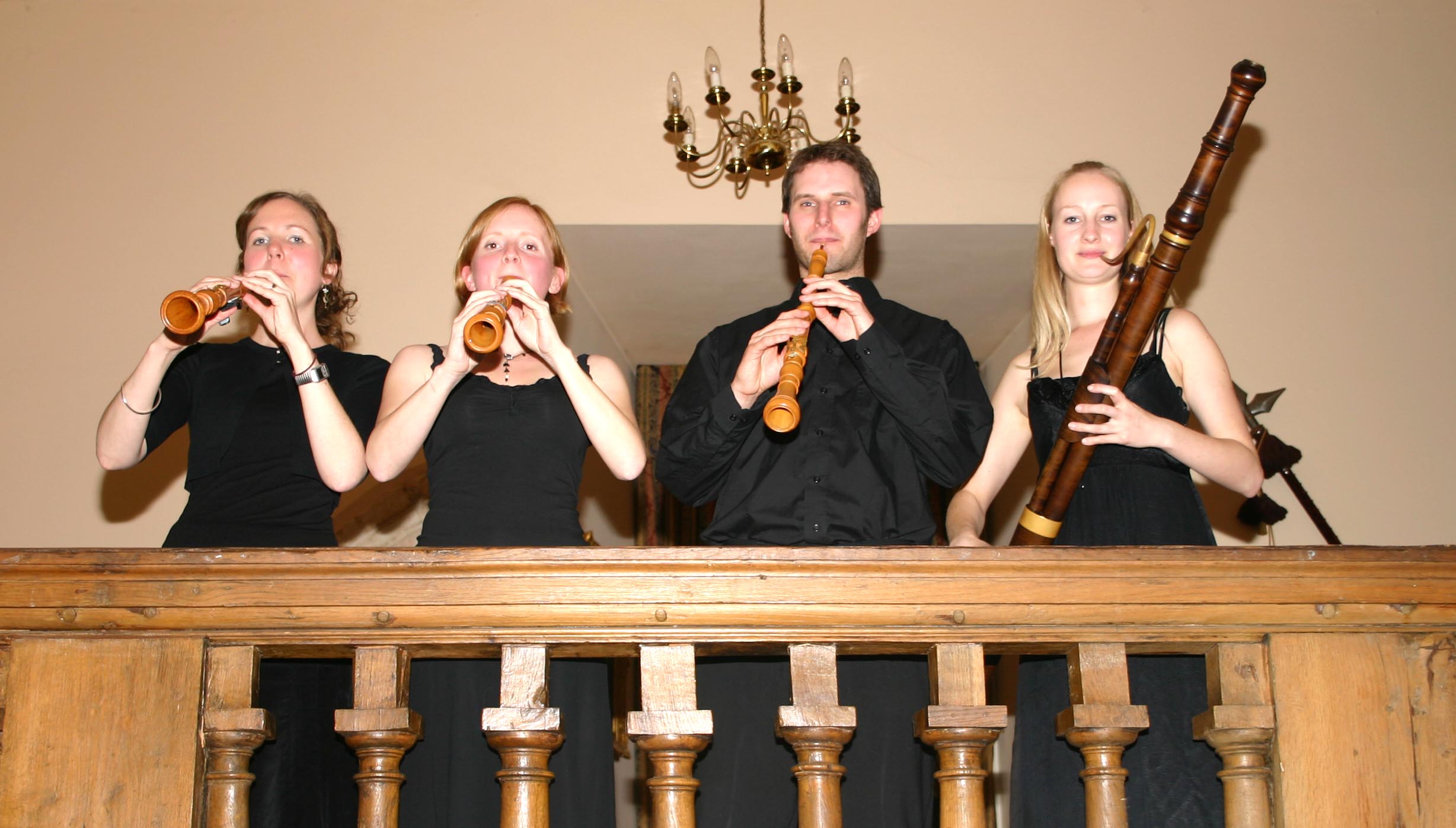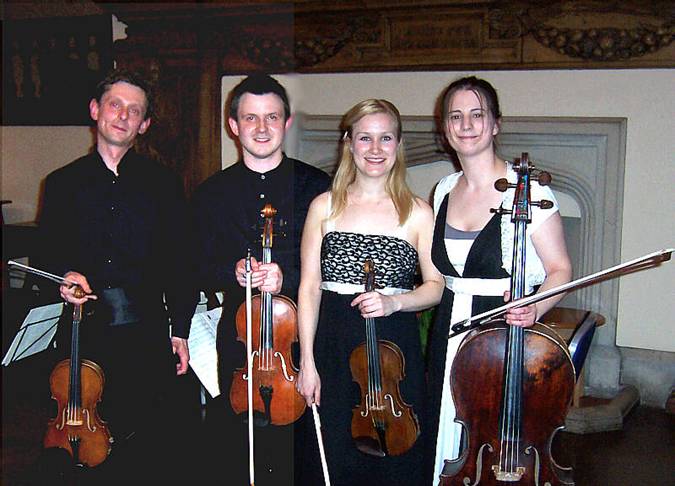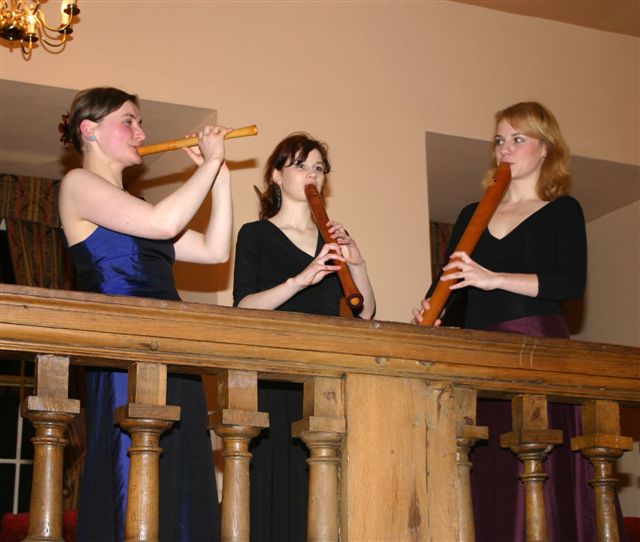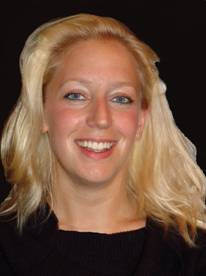
2008
“That was so good it make me cry”, and “Now I know it’s
Christmas” were just two of the comments heard as people left the Tilford
Bach Society Carols by Candlelight on December 13th at All Saints’ Parish Church in
Tilford.
The theme was “Music at Christmas” and this year the music
was performed by the London Handel Singers directed by Laurence Cummings. But
what brought tears to the lady’s eyes in the afternoon was the brilliant
contribution by the children of
The professional choir obviously agreed because they spontaneously
stopped singing to let the children sing the first three lines of the chorus of O come all ye faithful on their own. Two of the readings included a
violin interlude. Step forward
The themed readings from Jay Warwick, Laurie Lee, Thomas Hardy John
Masefield, Longfellow and of course Charles Dickens were researched by Rosemary
Wisbey and they were matched musically by Laurence Cummings with carols by
Richard Rodney Bennett, Peter Phillips, William Walton and other traditional
arrangements. Maybe it was the children, maybe it was the flickering candles,
maybe it was the music and prose, but it certainly felt like Christmas was here
at last.
Pete Wisbey
13 December, 2008
________________________
Piatti String Quartet
The Piatti
String Quartet made a welcome first appearance at The Tilford Bach Society in the Great
Hall of Farnham Castle recently.
Their varied and challenging programme demonstrated why these young
musicians have quickly earned themselves such a high reputation as they
performed works ranging over three centuries.
Mozart’s
Quartet in D K421 is a mature and highly subtle work with many chromatic
passages. The Trio section of the
Minuet movement was a light interlude with pizzicato accompaniment to a
delightful violin melody.
Britten’s
String Quartet no.1 is full of startling dramatic contrasts, opening with a
spellbinding shimmer of sound into which the cello drops pizzicato notes like
pebbles in a pool. This
tranquillity is shattered by episodes of startling violence. The final movement is a real tour de
force with its skittering counterpoint deftly and breathtakingly managed by the
ensemble.
The exuberant
opening of Mendelssohn’s Quartet no.2 in A minor transported the audience
to the high Romantic era, as did the lyrical Adagio with its impassioned middle
section. The declamatory, operatic
style of the Presto provided the grand finale to a superb evening of music.
Rosemary Wisbey
05 December, 2008
________________________
24th
October – Rowena Calvert (Cello) & Alison Rhind (Piano)
A large audience enjoyed an excellent concert in the
Great Hall of Farnham Castle. The Tilford Bach Society presented the duo of
Rowena Calvert (Cello) and Alison Rhind (Piano) under the sponsorship of The
Countess of Munster Musical Trust.
Farnham’s discerning and appreciative music-lovers gave an
enthusiastic reception to a mix of exciting classical pieces that were
performed with great éclat. Bach, Debussy, Beethoven and Rachmaninov
featured, in that order, and the audience was treated to a good variety of
styles and moods.
The Bach and Beethoven sonatas were predictably beautiful to hear and
played with perfect attack, synchronisation and virtuosity. The Debussy sonata
was a distinct change of pace and mood being impressionist in style, with some
Indian influences to the tones – a short piece with many different themes
and an excellent contrast that was a great delight.
The final piece was Rachmaninov’s Sonata in G Minor for Piano and
Cello, Opus 19, a piece that has a final movement with a breathtaking climax,
written by the composer for himself to play as the pianist, making full use of
the enormous stretch of his large hands. This extremely demanding part was
performed brilliantly by Alison Rhind.
Rowena Calvert has recently graduated from the Royal Northern College of
Music with a first class degree, receiving the outstanding score of 100% for
her final recital. This can be added to a string of awards and prominent
appearances that are accumulating rapidly. Her performance in Farnham earned
her many fans who will be looking out for reports of her professional progress.
Alison Rhind is already a well-established pianist on the English and overseas circuit, with many radio and television appearances. She plays with Scottish violinist Nicola Benedetti on a regular basis.
Ian Sargeant
25 October, 2008
________________________
26th September – The
Oboe Band

The oboes played at
‘War’ was represented by a Partita by Krieger,
‘Lustige Feldmusik’ or ‘Happy Field Music’, designed to
accompany open-air displays of military prowess. Purcell’s King Arthur is theatre
music portraying the legendary monarch’s battle against the Saxons,
interspersed with episodes of romance and enchantment, and culminating in the
well-known melody, ‘Fairest Isle’. Here the versatility of the contemporary
oboe family was clearly exhibited; the sweetness of the oboes themselves in the
lyrical movements, the rich, deep notes of the bassoon, and the strident tones
of the tenor instrument, the ‘oboe de caccio’ favoured for hunting
and battle. This is a strange-looking
instrument with a downward curve ending in a brass bell like a trumpet.
‘Peace’ included stately, refined music by the court
composer Lully and ‘Musique a Table’ written by Johann Christoph
Pez to accompany every course of
Louis XV’s sumptuous dinners, tantalizingly described by one of the
musicians. In a complete change of
mood the programme ended with a beautiful arrangement of J. S. Bach’s
Motet ‘Lobet den Herrn’, the intricate fugal texture displaying the
individual voices of the instruments and the skill of their talented players.
Pete Wisbey
09 October, 2008
________________________
11th July – Pegasus
It is nearly four
years since an historic first encounter between Pegasus and TBS. The writer was
not present for that concert but deeply regretted his absence when he heard
from fellow members about the extraordinary quality of the visiting choir.
Since then, Pegasus has sung for TBS for three major choral works and, now, for
four members’ evenings.
Pegasus gets
better, and better. The choir is now a mix of old and new faces, which is
excellent news as it means the choir is not in the short life cycle that might
have occurred when it started as a kind of choral alumni association of
The event this
time was the popular summer concert, which starts early and includes a break
for a full-blown supper, ideally consumed on the lawn of
The concert
programme was an exciting mix of madrigals and part songs, grouped into a
variety of themes or composers. English, French, Canadian and Swiss composers
were included in the main programme. The first group were all English starting
with My Love Dwelt in a Northern Land
by Elgar, a moving opening piece which was very well received and set a good
tone. Four French songs from Ravel and Debussy were followed by two quite
different settings of I Sing of a Maiden
by Lennox Berkeley and Arnold Bax.
The second
half of the concert was equally exciting – Vaughan Williams The Cloud Capped Towers was followed by
Swiss composer Frank Martin’s Songs
of Ariel. Andrew Hope is a member of Pegasus who composes music in a
medieval style and the audience greatly enjoyed his piece Sovranna Ne Sembiante. The final items were two pieces by the
Canadian composer Eric Whitacre. The compulsory encore was the extremely moving
Tebe Poyem (We praise Thee) by
Rachmaninov.
During this
feast of both food and music, the audience heard solos from of a majority of
the 26 choristers, in various pieces. This makes apparent what must be one of
the choir’s most extraordinary features – they are excellent, strong
voices, all with very good sense of musical pitch, but which also blend
perfectly. They clearly listen to each other as they sing so that individual
voices do not dominate. The credit for this probably goes in large part to
their conductor Matthew Altham who is undoubtedly a very talented musician.
Come back
soon, Pegasus!
Ian Sargeant
12 July, 2008
Postscript: Unfortunately,
Pegasus did not progress into the finals of BBC’s Last Choir Standing,
which may be due to the choice of song which did not suit this choir.
__________________________
25th May – The
Brodowski Quartet

David Brodowski, Felix Tanner, Catrin Win Morgan and Vanessa Lucas Smith
The Tilford Bach Society enjoys a string quartet. The Brodowski Quartet
captivated a large audience at
The second piece was a major contrast in a work composed by the German
composer Alfred Schnittke. The Quartet No. 3 is, like many of the
composer’s works, a juxtaposing of the musical themes of other composers
that are then developed in his own way. Musical motifs from Orlando Lassus in
the 16th century were set against others by Beethoven and Shostakovich. The
interplay of these themes was recognisable for the first movement, difficult to
trace into the second movement but indecipherable when we reached the third and
final movement. Not exactly baroque music, but many in the audience appreciated
this massive contrast and enjoyed the piece with its unusual structure and very
demanding score that was performed with great flair.
The final work was Mendelssohn’s Quartet in F minor and the audience was highly appreciative of a superb performance. The Brodowski Quartet are an excellent ensemble who are very accomplished young musicians. With only three years playing together, it is to be hoped they can continue to develop as they show great promise.
Ian Sargeant
26 April, 2008
______________
4th March – Tre Fontane

An entire evening of recorder music: ‘Won’t the audience find
it a bit boring?’ one of the musicians asked anxiously, but nothing could
have been further from the truth.
Ilona Veselovska, Isobel Clarke and Iva Lokajickova played eleven
instruments between them, demonstrating the ways the instruments developed with
the very varied music that was written for them from the medieval to the
baroque period.
Medieval music from
The Renaissance period was introduced by Edward Gibbons’s What strikes the Clocke? which
incorporated an intriguing ticking effect, and the complex and fascinating Sit
Fast, a fantasy by Christopher Tye.
Switching to instruments more familiar in shape and with a clearer and
more powerful timbre, the group played baroque music including a stunningly
demanding solo fantasia by Telemann.
I would not have thought it possible to perform a fugue on a single
recorder but this was accomplished with great panache by Isobel Clarke. As a treat for the Tilford Bach Society Tre Fontane ended their programme with J
S Bach’s organ prelude Herr Jesu
Christ dich zu uns wend, specially arranged for the consort and sounding
very like an 18th century portative organ.
Rosemay Wisbey
15 March, 2008
18th February –
Paul Robinson & Annabel Thwaite

The Tilford Bach Society greatly enjoyed a recital by the tenor Paul
Robinson, accompanied by pianist Annabel Thwaite. This was a concert with very
contrasting parts – four song cycles by quite disparate composers.
The first half of the concert comprised the Liederkreis songs by Schumann and La Bonne Chanson by Fauré. The themes of the poetry in each cycle
were different, with the Schumann set being focused on sad contemplations of
nature and love whilst the Fauré was based on the joy and optimism of
love. But it was only the words
that indicated this as both works had a musical melancholy to them. The
interpretation of the works was excellent and greatly appreciated.
Poetry Till Earth Outwears by
Thomas Hardy set to music by the British composer Gerald Finzi opened the
second half. This was also beautiful music beautifully performed, but again
frequently with mournful strains.
The last set of songs contrasted totally with all the earlier pieces.
Four amusing Noël Coward songs were delivered with great gusto and
technical skill. The audience discovered that there is much pleasure to be
derived from hearing witty popular songs sung by a trained singer who can
combine professional technique with good dramatic finesse.
The audience absolutely demanded an encore and a deft performance of Mad Dogs and Englishmen was particularly
well received.
Greatly enhancing the evening was the piano accompaniment by Annabel
Thwaite whose brilliantly controlled playing complemented the singer perfectly.
Ian Sargeant
19 February, 2008
__________
LtoR: Marta Gonçalves, Erik Dippenaar (Harpsichord), Elektra
Miliadou,
Claire Bracher, Sara Deborah Strunz
For the first
Tilford Bach Society members’ evening of 2008 in the Great Hall of
Farnham Castle, Ensemble Amaranthos presented a musical tale of two cities,
In a varied
programme entitled ‘The Spell of the Metropoles’ the five musicians
performed pieces by six of these composers, playing on period instruments and
choosing works that enabled the audience to appreciate their distinctive
qualities, both individually and as a group.
The opening
work, Telemann’s ‘
Amaranthos
ended their programme with another Telemann ‘
Rosemary Wisbey
26 January, 2008
__________